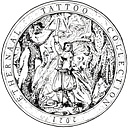A tattoo is an ancient form of body modification, which involves picking ink below the top epidermal layer, to create a permanent design below the surface of the skin. The art form of tattooing is at least 8,000 years old, and has developed through many stages and will inevitably continue evolving. The oldest evidence of tattoos has been found on a mummy, on the Italy Austria border in the Alps. This mummy, named Otzi, had 61 tattoos. The tattoos themselves were not detailed but consisted of lines. The way archaeologists believe these tattoos were created is by cutting the skin then rubbing the ash or soot into the cuts. A far cry from a modern machine!
Ancient Egyptian mummies with tattoos have also been unearthed, these slightly more modern than Otzi’s in 3100 BCE. However, the tattoos discovered here were the first ‘figurative’ tattoos. Where Otzi only had tattoos of lines, the first Egyptian discovery had tattoos of two-horned animals. Although the animals depicted on the mummies’ skin are hard to decipher, it is clear that one of them was a bull. It was believed to have been a symbol of status, power and virility, and it appears to have been applied similarly to modern tattoos using a sharp point to inject soot under the skin. More interestingly, they also functioned as ancient healing methods.
The most influential ancient form of tattooing is the Polynesian style. Their tattoos have been replicated for thousands of years, surviving until the present day. The word tattoo originates from the Samoan language ‘tatau’, which gave an English speaker a term to use instead of ‘scarring’ or ‘marking’. In Samoan culture, the skill of tattooing is taught and passed down through generations. The equipment that they used is handmade from a turtle shell and a boar’s teeth. When British sailors arrived in Tahiti, they met people covered in Polynesian style tattoos. As a result, the crew did tattoos to mark their travels.
Tattoo artists did not have access to any kind of tattoo machine until 1891, meaning that all the tattoos before that were hand poked into the skin. After the creation of the tattoo machine, the popularity of tattoos increased drastically. The first tattoo machine was a modified version of an electric pen invented by Thomas Edison. This modification by Samuel Riley created a rotary tattoo machine. However, nowadays, tattoo machines often use electromagnets to work instead.
Tattoo jack in Nyhavn shop , Copenhaguen 1942 (photo: Inge Ejstrup/Estrup-arkivet)
The only area of tattoo technology that has been neglected is recording, preserving and collecting tattoo art. Tattoos unlike paintings or sculptures will eventually disappear as the person with the tattoo passes away. This means that there are millions of beautiful and significant tattoos that we are no longer able to see. However, using recent developments in NFT’s and blockchains, tattoos can be bought and sold through Ethernaal and the artwork will live forever as an N2FT.
